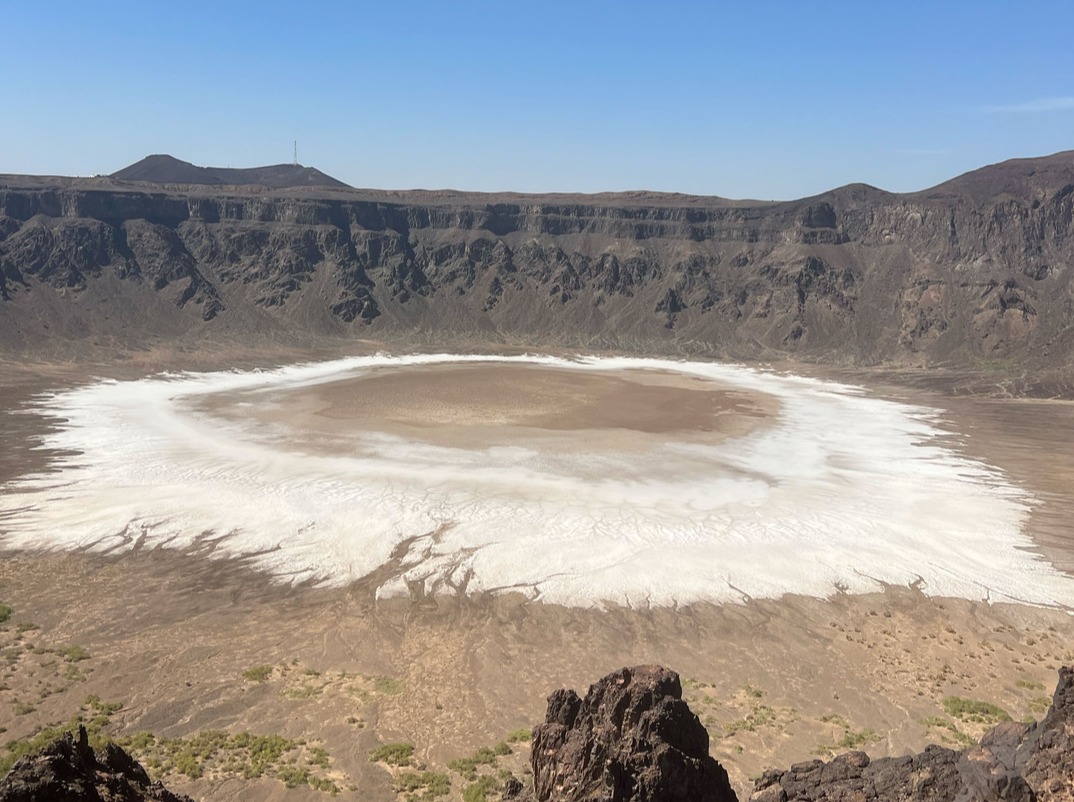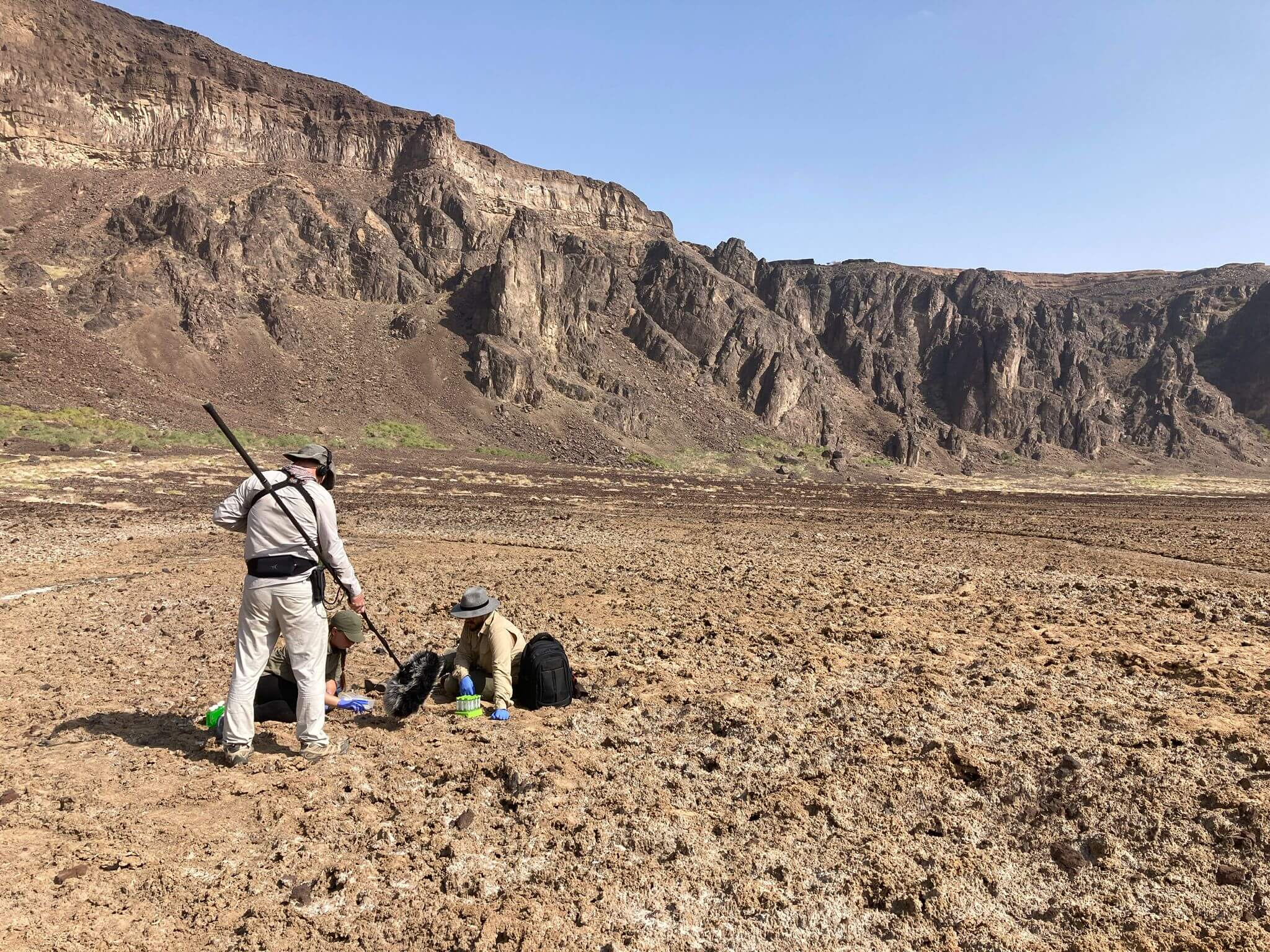Saudi Arabia crater holds clues for extraterrestrial life

The Wahbah Crater
In the search for life in space, scientists have studied life in some of the earth’s most extreme environments. A new study by scientists at King Abdullah University of Science and Technology (KAUST) has found biological clues in the Wahbah Crater in Saudi Arabia for life on Enceladus, one of the moons orbiting Saturn. By sampling extremophiles living in the crater, the scientists found biosignatures that may mark life on the celestial body more than 1 billion kilometers away.
Enceladus has become a curiosity to astrobiologists due to its large ocean below its icy crust. This water is highly alkaline and saline and includes complex molecules, such as methane and oxygen, consistent with life. These features happen to be shared by the Al Wahbah Crater.
“The Al Wahbah crater serves as an Earth analog for Enceladus’ Ocean, where similar conditions might support life,” said KAUST Professor Alexandre Rosado, who led the study.
To identify the unique characteristics of life in the crater, the scientists isolated 48 bacterial strains, finding two had a composition that indicated an adaptability suitable for the extreme environment of the Saturn moon. Based on their genetic, metabolic and chemical profiles, these two strains showed an effective survival strategy for the extreme environment of the crater.
“The strains are thermohaloalkaliphilic bacteria, thriving in high temperatures, salinity and alkaline pH. These conditions mimic the environments on Enceladus, making them ideal candidates for studying life in such extreme conditions,” said Júnia Schultz, a postdoctoral researcher involved in the project.

KAUST researchers collecting specimens at the crater.
Along with a high tolerance for alkalinity and extreme temperatures, the two strains possess other advantageous features inferred from their genomic capabilities, such as the potential resistance to high pressures and to ionizing radiation, which minimizes DNA mutations.
Al Wahbah is not a unique model site for Enceladus on earth, but scientists interested in extraterrestrial life prefer it to other locations.
“Environments with conditions similar to Enceladus are rare on earth. Other places have been studied for resembling Enceladus’ Ocean. However, they are not as accessible or well-suited for the type of microbial studies we conducted at Al Wahbah,” said Alef dos Santos, a Ph.D. student who contributed to the study.
Rosado and his colleagues noted that their study is the first to demonstrate the usefulness of studying life in Saudi Arabia’s extreme environments as a model for detecting extraterrestrial life. They added that other locations in the Kingdom, both on land and the Red Sea, may be valuable for seeking biosignatures elsewhere like on Mars.
Having sent its first female astronaut to space in 2023 and with plans to launch its first space tourists in 2026, Saudi Arabia aims to have a major presence in the space industry in the near future. The Al Wahbah findings will assist in positioning Saudi Arabia as an invaluable partner with the several space agencies, including NASA through its Europa Clipper, planning to launch missions for the exploration of Enceladus in the next few years.
“In addition to advancing our understanding of how bacteria might adapt to hostile environments, this research aids in guiding the continued astrobiology quest for extraterrestrial life” said Dr. Kasthuri Venkateswaran, a retired scientist from the NASA Jet Propulsion Lab and adjunct professor in the Department of Space Studies at the University of North Dakota.
The study can be read in Astrobiology.

